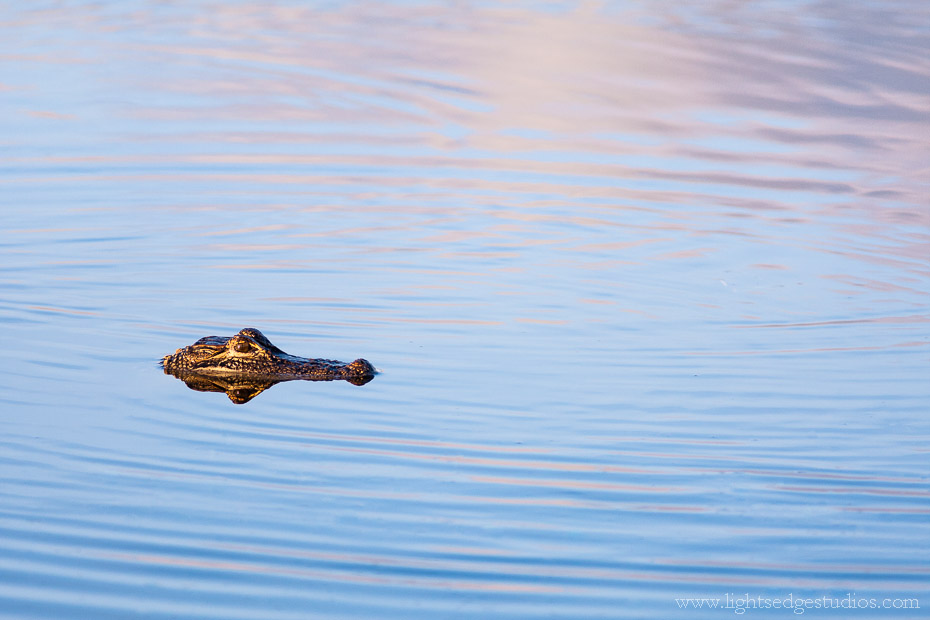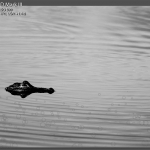
Over the last couple of weeks we’ve explored the Atlantic coast of Florida as we consider a move to the sunshine state. A visit to Merritt Island National Wildlife Refuge treated us to an amazing sunset and a young American alligator in brilliant blue water the following morning.

Unfortunately, I made a pretty serious tactical error the evening before: I mounted the 300mm lens I would use to make the image above while the car’s air conditioning was still running, and did not check and clean the sensor back at the motel that evening. The result? The above image, upon scrutiny, revealed a field of dust bunnies scattered along the lower third of the frame (top 1/3 of the sensor, since the image is reversed.) While image cleanup has become easier with each new version of Photoshop and Lightroom, I still prefer not to have to do very much in the first place. Lesson? Better to take the 10 minutes to clean the sensor than to spend an hour and a half in front of the computer to rescue a photograph!